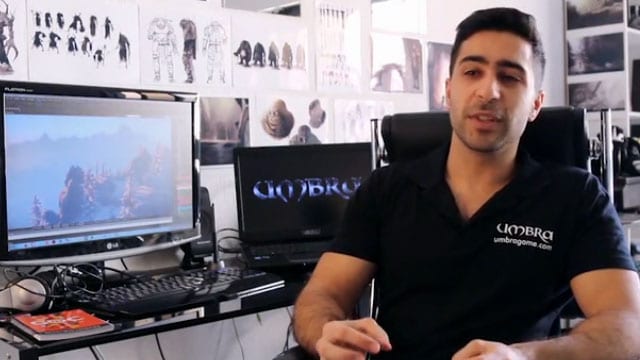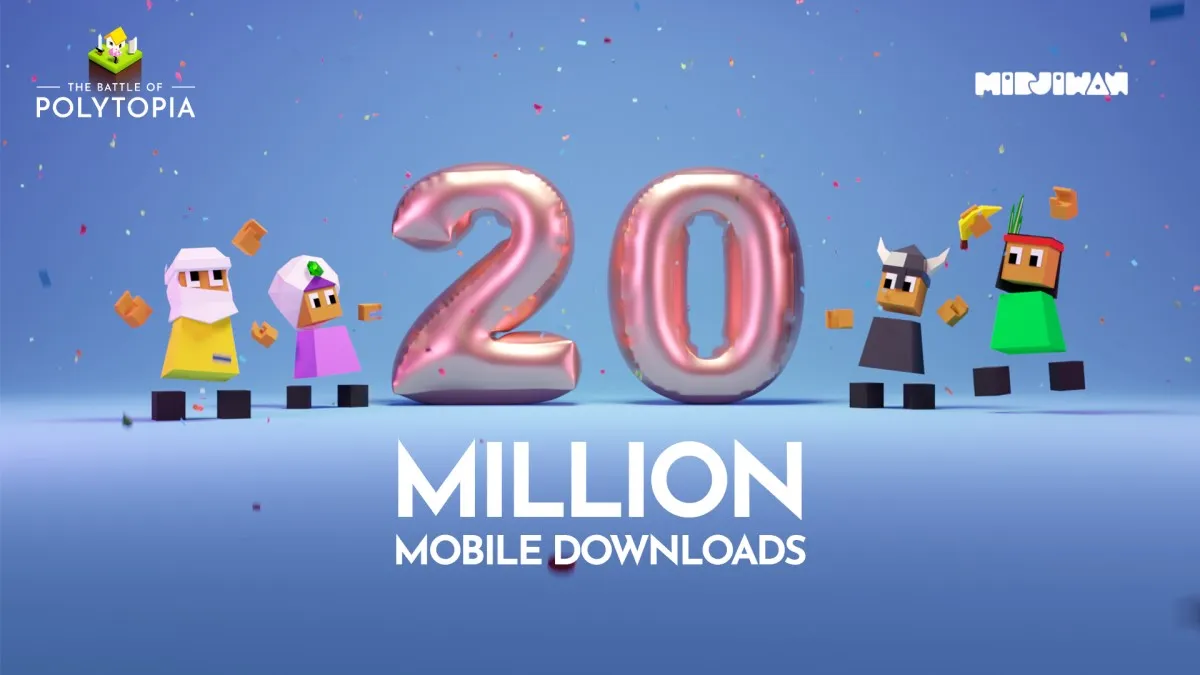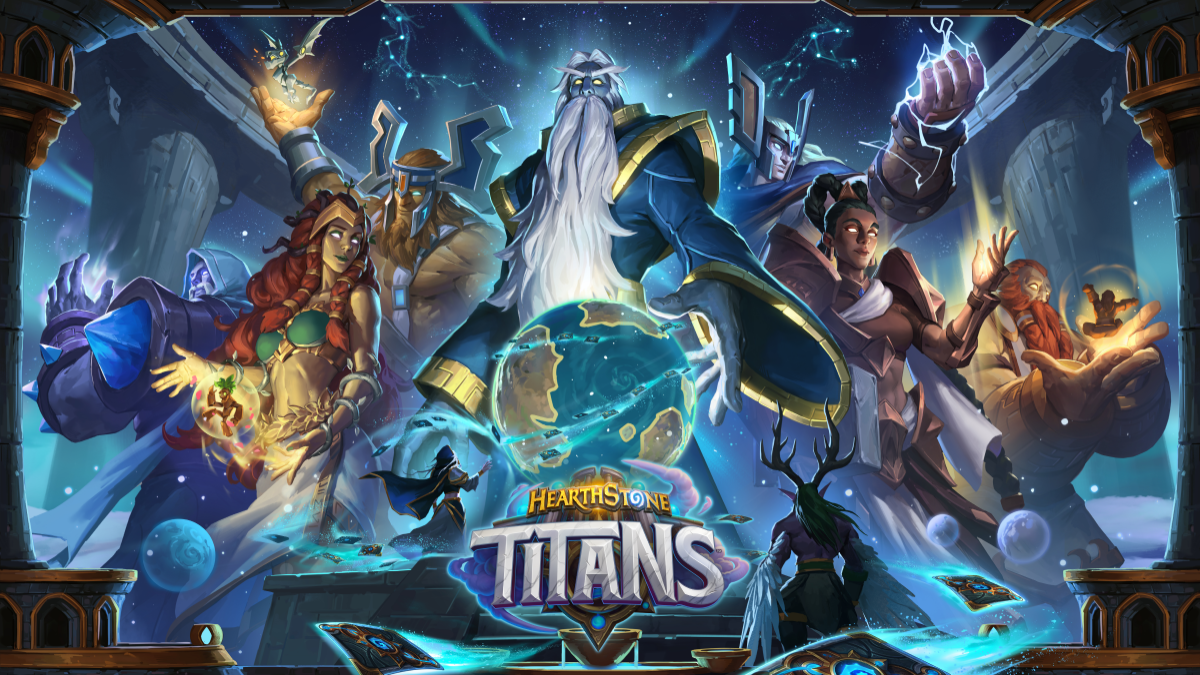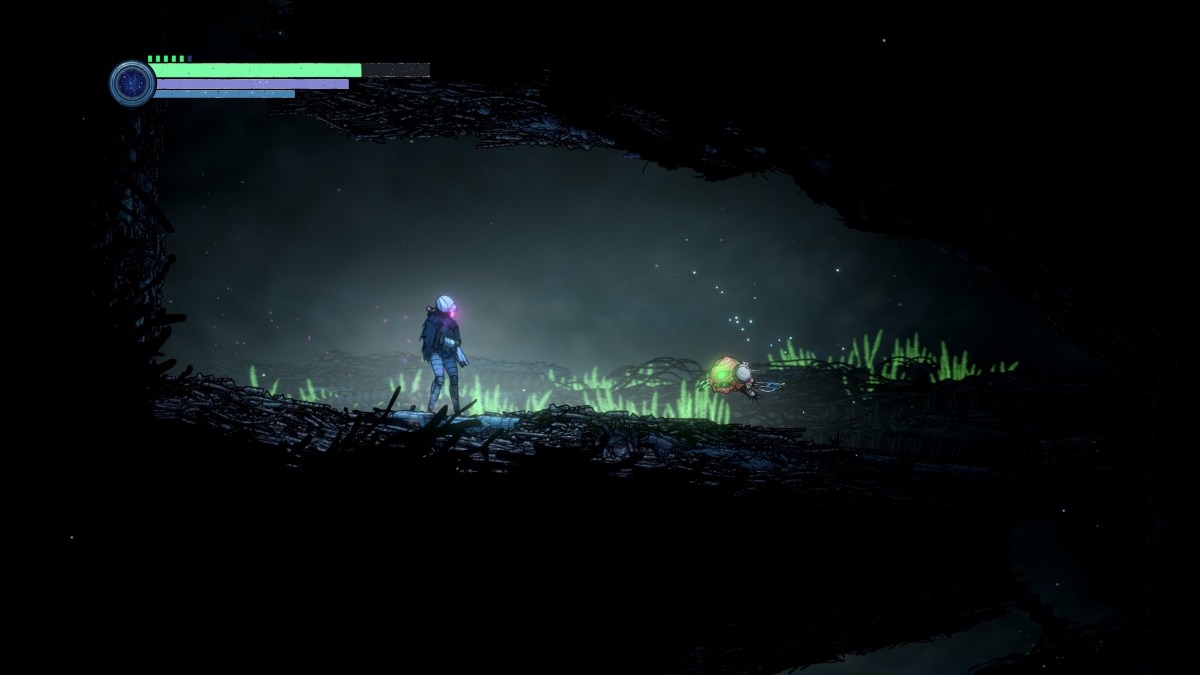SolarFall Games ARPG Umbra recently met its Kickstarter funding goal. We spoke to SolarFall’s Daniel Dolui to find out more about the game, and the studio’s plans. Daniel talks about their influences, approach to development, and the game’s many features.
You can read on for a transcription, or listen to the interview below.
[powerpress]
PC Invasion: Can you introduce yourself and tell us something about your game?
Daniel Dolui: I am Daniel Dolui and I’m making Umbra, an action RPG inspired by the Diablo franchise. Mixing in mechanics from other games and hack and slash games.
PCI: You just had a successful Kickstarter launch. You’ve reached your goal with over a week to spare.
DD: Yes, we reached the initital funding goal and we are into the stretch drives. Adding multiplayer to the basic single player, and we’re very excited to add MP in.
PCI: Your Kickstarter page has a great deal of info about the game, including screenshots, developer blogs, and much more. Rather than doing the whole interview covering info already on that page, we’re going to talk about some other issues. But just to cover the basics, can you tell us how long the Umbra project has been going and what are the goals?
DD: We’ve been working on Umbra for four years. In the beginning it was just me making a modding platform for people who wanted to use the Crysis game to make an RPG style mode. The more I developed that project the more I began to orient it into an ARPG system, since that was the kind of game I enjoyed the most. Finally started to become a real project once all the team members joined in. We started to add a story that we wanted to tell and creating a game.
In the beginning I came from the modding world, and our other team members also were experts working on the CryEngine and from that community. We’re now three full time working on this and we were all at the same company and work together very well. Umbra was a part time project in the beginning and we’ve become full time and the Kickstarter will help with that going forward.
We’ve worked using the proper design tools and created our own to make future development easier. Thanks to our experience on past efforts we’re able to ask for funding to accelerate our progress and end the game.
PCI: You guys are French, but I don’t think many American gaming fans know much about production of video games in your country. Is there a gaming dev community there you can tell us something about?
DD: Actually, there are a lot of developers in France. We have studios like Arkane Studios, and some big game developers here. Smaller indie studios are common as well. It’s still a bit underground here, but there are a lot of cool projects underway. Cyanide made the recent version of Blood Bowl.
PCI: You said you were a fan of the Diablo series and other ARPGs?
DD: I play a lot of games, but ARPGs are one of my favorites. Early on in Umbra I had the idea of creating a modding platform, and the more we worked on it the more ideas we had for the game mechanics and the game universe. So we put more of our content into the platform system, and that’s how the game was created.
In the main game we are influenced by Diablo 2 of course, Diablo 3 for the quality of action it has, particle effects and such are very nice. Path of Exile has a lot of influence as well. We very much like the potion system and we’ve somewhat copied theirs after viewing potion systems in every game. We are going to implement some mechanics on top of that to customize potions via crafting recipes.
What we tried to do with Umbra is have a very free development for your character. We want players who want to play, for example, a Barbarian, or an Undead, to do so. We have mechanics to balance the gameplay so you can’t use too much of a resource for free. There are 3: rage, stamina, and mana. When you Rage you lose some Mana, etc. In the end the game balances the play styles and players have to be careful in how they play.
PCI: The character creation looks very free form. Obviously with your small team you can’t make tons of different graphics, so you’ve made one character model but he can transform into lots of different things. You are making the variety in how players specialize their character, so they can build a melee tank, or a caster, or other variety.
DD: There are 2 main things to consider. We make a big difference between character building and the character visuals. We’re a bit more limited in the visual options since as you say, we’re not a huge team to make all the different art. The thing is that for the basic visual appearance of your character; his face, hair, beard, etc, we have some few customization possibilities… but also from my own experience in these sorts of games, once you have armor on you don’t care about their facial features anyway. Though it’s nice to dye your gear. So we just have basic appearance changes; skin color, beard style, hair style. We’ll add a female character if we meet that stretch goal, but for the basic funding we wanted to spend our resources as carefully as possible on graphics.
As for character building, we’re much much more free and much more open. There are let’s say 3 layers of powers in Umbra.. actually 4 in some ways. You can, for each level, affect points into the four attributes, which are close to the basic Diablo stats. Strength, dexterity, constitution, and magic. Each of these points have an impact on your character; if you have a lot of STR you’ll be able to stun enemies when you hit them. with blunt weapons, for example.
If you have a lot of dexterity you’ll be able to dodge better. Constitution will increase your armor, that sort of thing. Every point you actually put into a stat will really affect your performance.
We also have passive skills, which can be something very classical like movement speed, more gold find, more magic find, etc. And we have several trees where you can assign points, and the more you add to the skills the more powers you will unlock. At some point you will be able to get new skills in your spellbar. Active skills you can use, I mean. Basically you can use six active skills, but one passive skill unlocks new skills. Dual wielding two-handed weapons, for instance.
Mercenaries, for instance. You can use a skill to hire more mercs at once, but they’ll take a higher percentage of the gold you find. And you’ll be able to do many other things with passive skills.
The active skills are looted as books, just like in Diablo 1. I really like that finding skill mechanics. You’ll loot them according to how you play. So if you use a lot of fire skills, you’ll most likely find more books with fire skills.
We also add the Apocalyptic Form on top of the three layers of power. We’ll talk about that later.
PCI: In Diablo 1 the spellbooks were all magical spells, like Fireball or Chain Lightning. I assume your spellbooks have abilities for combat as well; things like Whirlwind or Dual Wield?
DD: Yes, yes, of course. Your character learns the skills by reading them in books. There are Barbarian skills, Warrior skills, Assassin skills, etc.
PCI: The other aspect I like about the character system is players can grow wings or horns or the like from skills. They can even grow a third arm and use three weapons.
DD: It’s called the Apocalyptic Form. It’s not easy to learn in the game, but it’s amazing when it comes. According to how a player plays, they may unlock a mutation that enables all sorts of new options. You gain three of them to create your Apocalyptic form. You can grow 3 or 4 arms and use more weapons. You can grow wings and make huge leaps and reach places you could not otherwise reach. You can grow horns and give yourself a charging attack that will knock out enemies in your patch. You can gain an aura to raise undead everywhere you walk.
The idea with the Apocalyptic form is the normal hack and slash gameplay — fighting trash mobs, elite mobs, etc — but eventually a huge threat to your character will appear and if you time correctly your reaction to the problem you gain the Apocalyptic form.
PCI: Could a character gain multiple apocalyptic forms at once? Or if you didn’t use one repeatedly it would change or you’d lose the ability?
DD: You mean by rerolling your character? The way we are designing now is one apocalyptic form per character. You would have to reroll to make a new character with new apocalyptic forms. Your stats really determine your skill types; it’s difficult to switch from a barbarian to a mage, for instance, since the stats are already spent. We think it’s better for players to reroll.
We will listen to the community though, and if there is a demand for a full respec, we could make it available. But our initial design is that players should build their character as they want, customizing in a special style each time. Customize them plenty.
For the low level gameplay you will be able to reroll, but at some point it will become permanent.
PCI: So more of the old school style, like Diablo or Diablo 2, where you build a character to a purpose and don’t just respec like Diablo 3. Last related question; balance. You guys have a lot of ideas for these aspects of characters, but how do you equal them all out? It’s not a big deal at first without a big multiplayer game, but it seems like a challenge to equalize things.
DD: It will be a challenge. As you say, for the initial game it’s just a single player game, so it’s less of an issue. But surely long term we’ll add on multiplayer via the stretch goal, and then we’ll have to worry more about balance. Actually, we aim to start the early access this November, just a few months. And we hope players will be able to play the game that soon. We’ll work on more features on the side, and we have some ideas to make sure the game will be balanced. At some point it becomes a spreadsheet problem.
PCI: And of course players like having powerful character. You can overdo balance and make every character weak and a challenge, but players like to find great gear and specialize their character to stomp enemies. Just want to stop short of god mode where it becomes too easy and boring.
DD: That’s actually the idea behind the Apocalyptic form. With that we don’t aim to have a huge difficult game like Diablo 3 when it launched. We liked Diablo 2 more where you could build a character to your style and succeed the first time. But without as much replay and item hunting as Diablo 3.
The real difficulty in Umbra is to come with the huge traits you’ll generate and how you’ll use your Apocalyptic form.
PCI: How far along is the development of that?
DD: It’s not in the prototype, but it’s in the internal build, and we hope to debut some videos of Apocalyptic form very soon, perhaps even next week.
PCI: Speaking of cool visuals, I wondered about the look of the game. Using the Crysis engine it’s a very crisp and clear visuals and it does nature and foliage very well. Environmental effects. You see those in your early Umbra videos with grass blowing out, and water freezing, etc. You like the engine for that sort of thing?
DD: Very much. We have a lot of experience with the Crysis engine, so it allows us to make the most of it. It also allows us to really create some cool mechanics, like turning puddles to ice, adding a cold aura around your character. And we like to use fire, frost, lightning, and water all together. The visual environment really serves that well.
Working with the engine isn’t that difficult. It’s not hard to get a good looking scene. It’s a bit harder to get a really good looking scene, but we have experience with it and we have good partners for the tools we needed. Most players who have taken a look at the game even in the early testing engine think it looks very beautiful. Recent news of the graphical downgrade for Witcher 3, which uses the same engine [Editor’s Note: The Witcher 3 runs on CD Projekt’s own REDengine] … we said no. We will not reduce the graphical quality, and players without cutting edge computer can play on lower visual settings. Playing on the highest graphical mode won’t be that huge a computer load and will look just like our promotional videos.
PCI: People should definitely check out the videos for some very cool effects. One portion shows a battle in knee-deep water, and the character casts a cold spell and freezes the water, locking all the enemies in place. It looks amazing coming from a game like Diablo 3 where there’s pretty background art, but there’s no interaction. Cold spells don’t freeze water, fire doesn’t burn plants, etc.
DD: Yes, there are effects like that in our game. Players can do other things with lightning as well. It forces players to adapt to the environments somewhat. For instance, fire skills will work less well in a snowy mountain setting.
PCI: There’s a real difference in the visual style; most ARPGs are much more cartoonish or stylized. But you guys using the Crysis engine have a more realistic style.
DD: We could have done a more cartoonish style, and there are some Asian MMOs using the CryEngine and they’ve made the game look like anime, or manga. But for our game we had two reasons to go with this look. First, the story we want to tell is quite mature in some ways. I don’t mean necessarily nudity, but we have a real scenario with dark truths to discover. Players will find books to read in the game and mix the information with the NPC information and find a secret base.
Secondly I’m not a big fan of the cartoonish look for fantasy. I think it makes it a bit childish in some ways. When we talked about the action of the game, we thought about what games we liked, what games we wanted to look like, what the game engine would let us do, and the CryEngine has such a great lightning system that it’s very easy for us to get a good looking scene and to make sure the element we want will be easily seen by the player. We still have some work to do on that, but we know how to do it.
Also, usually fantasy games, especially the isometric view, goes for a very cartoonish look since it actually helps to see the elements (fire, cold, lightning, etc) more easily. We choose to do ours a different way since the CryEngine works so well for it, and we’re happy with how the game looks.
PCI: It looks good, but it’s different to see for people used to cartoonish ARPGs.
DD: It’s true, but we’re more fans of other fantasy games like the Witcher series, which are fantasy games that aren’t really cartoonish.
PCI: What do the world dungeons and areas and monsters look like? How do they compare to the traditional fantasy visuals?
DD: The environment… there is an open world in Umbra; a lot of exteriors. So we cover mountains, swamps, forests, not desert and not too exotic places. We want to have almost some stuff you can see in movies like The Lord of the Rings. That’s one of our main visual references. We have interiors… the idea is they were built by human civilizations that were technologically advanced. So you can expect some cool technology scenes. And there will be some creepy places, but we don’t want to go too creepy since we think it’s been done so often.
About the monsters… the universe of Umbra is mostly populated with humans. There are mutated humans, some undead ones. We tried to focus on the humanoid character, and modify that. Some magic stuff happened, something happened to mutate or change humans. Like big supernatural powers that change appearance also.
PCI: How do you guys handle randomized levels? That’s very hard to do in games, so games end up with a lot of small size pieces that look generic like Diablo 2, or else Diablo 3 has lots of very large set pieces that look the same every time and don’t seem very random.
DD: We’ve actually released a video about that in our last Kickstarter update. We’re pretty much in the middle of the two extremes you describe. For two reasons, the first is what you just said. The second reason is that since we have the CryEngine, we want to control the visual quality of what players will see. We can control where the lights are, how the shadows are cast, etc.
We actually have a system that gives us a basic style. We have what we call “prefabs.” These are a collection of walls, lights, props, everything you can find in a room. And we randomize that with visuals on top of it. So you might find rooms with a lot of blood on the walls, or other changes in furniture, or chests around the outside of the room, or turn the walls into bars, that sort of thing. Dust, frozen elements on the ground, etc. We can make rocks fall from walls and across the ground, or create fire all over the ground, which can change the visuals as well as the gameplay.
Players can also get their hands on the CryEditor much like we’re using, and players who want to do modding can create their own areas or prefabs, and their own content and props if they’re really going to work at it.
PCI: You mention players can do their own modding. What’s your long term plans on this? Do you plan to add to the team and possibly work on this game for years? Or is this a small project and you want to work on something bigger or different next; Umbra 2?
DD: We’ve worked on Umbra for 4 years so far, and we want to keep going. For modding, we know players can create amazing content and we’d love to add some player-created content to the game. I come from the modding community myself, working on Battlefield 2 and then on Crysis. I’d love actually to have some modders create content that we could use in the game.
When I was a modder, especially on Battlefield 2, I was always frustrated that we never had contact with the developers. We want to change that in Umbra and we’d like to work directly with the community. There is already some how-to blogging info in one of our dev blogs, giving players information about how we’re creating some of the visuals and elements. We’ll release new info if we can, via a wiki or videos. It depends somewhat on the success of the game and how much money we can put into it.
Our game will be made basically with the same CryEngine players can obtain. We want to make the game as accessible and moddable for players as possible.
PCI: Last question: what’s your time frame? When can players get access to the game and how do you plan to scale up to a Beta test?
DD: Yes, players can get their hands on the advance prototype in 1-2 months. They will be able to test much of the game in that mode, but it’s not balanced for long term. We built it for five-minute testing at a gameplay conference. Our target is for November 2015 to release a much more playable game, and we hope to continue with updates every week or two with more content, more of the game world, etc. We’re aiming to release the full game by October 2016, and we think the Beta will start about 6 months before then, once we’ve got most of the content of the game implemented. That’s a very tentative schedule, though.
PCI: That sounds great, and hopefully we can check in with you guys next year. I like that you’re open to working so much with the community and responding to their input.
DD: We’ve done some already, with a lot of input and ideas from our Kickstarter page, and we’ve actually added and changed the bonuses in the stretch goals based on player requests.
PCI: Thanks for your time and good luck with your project.
DD: Thank you.










Published: Jun 12, 2015 11:00 am